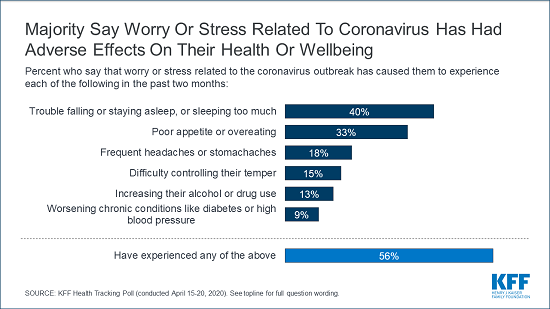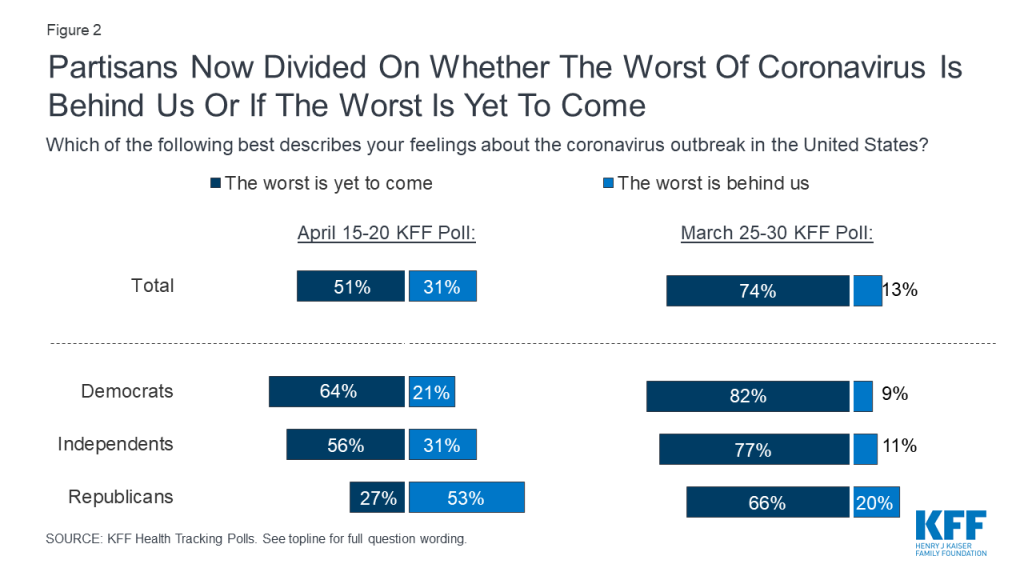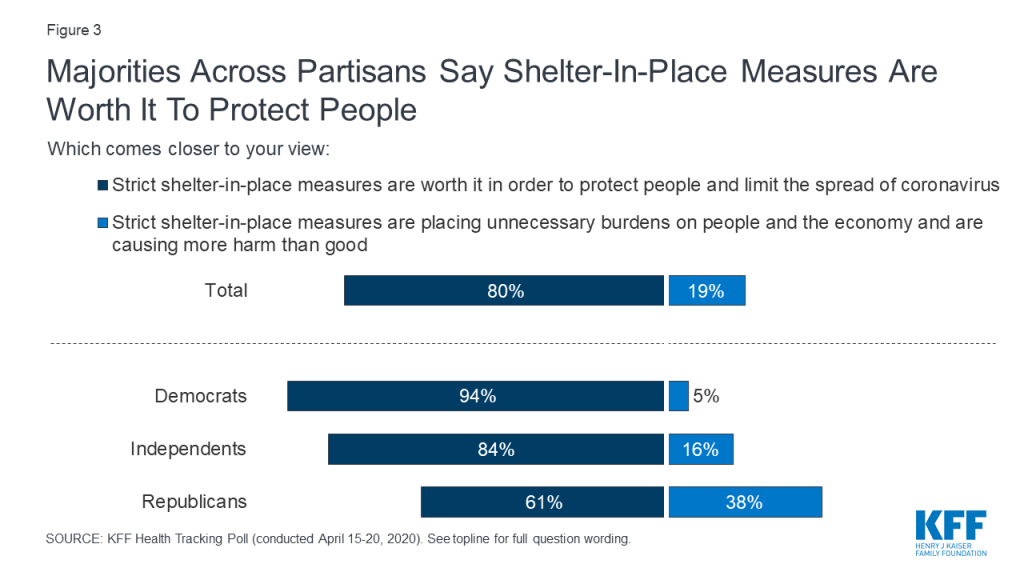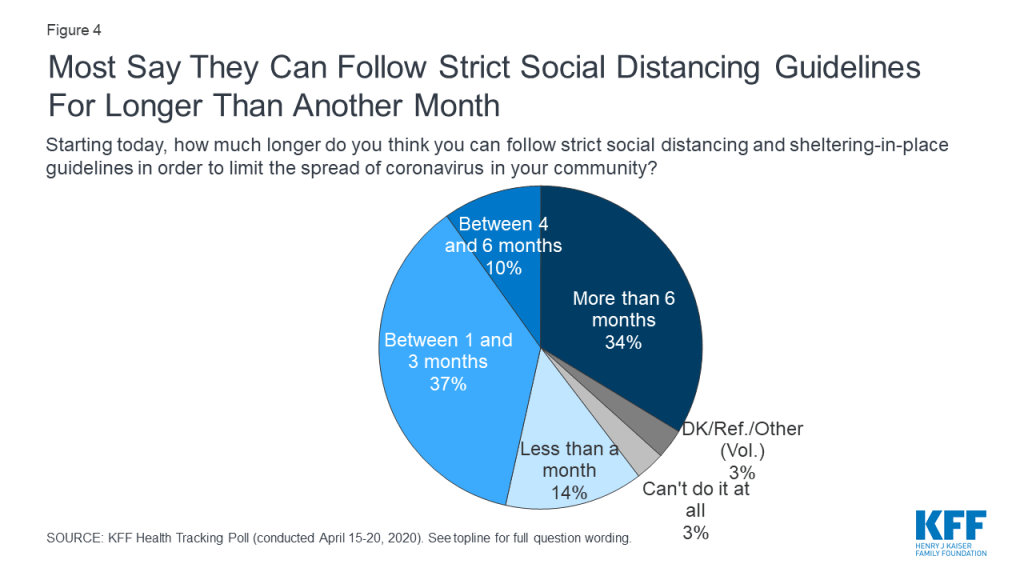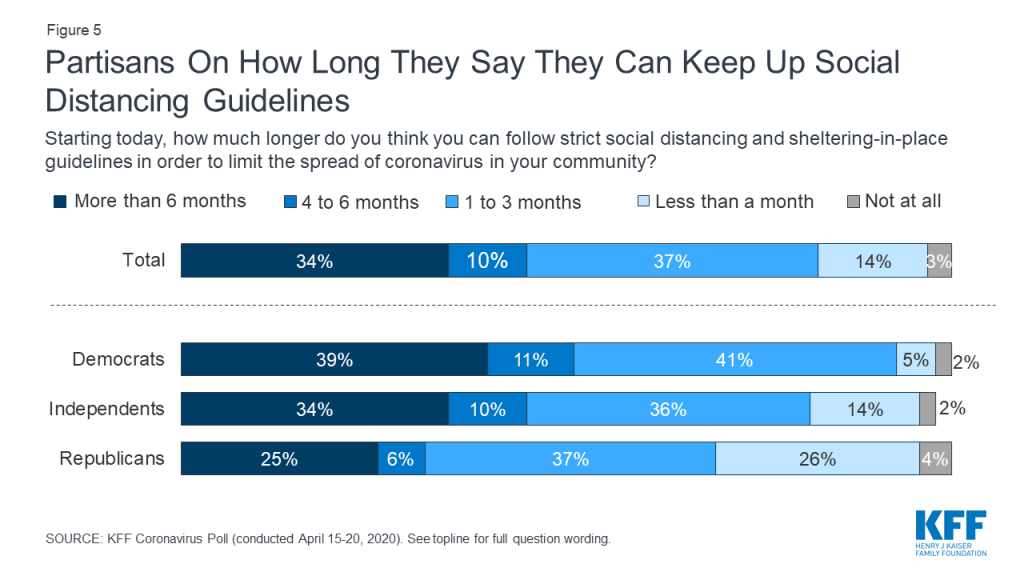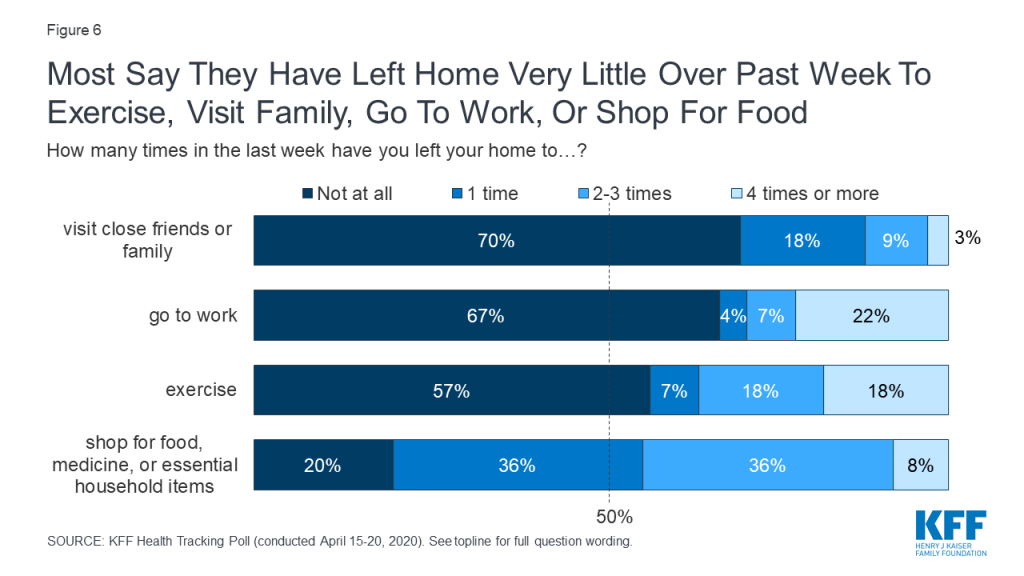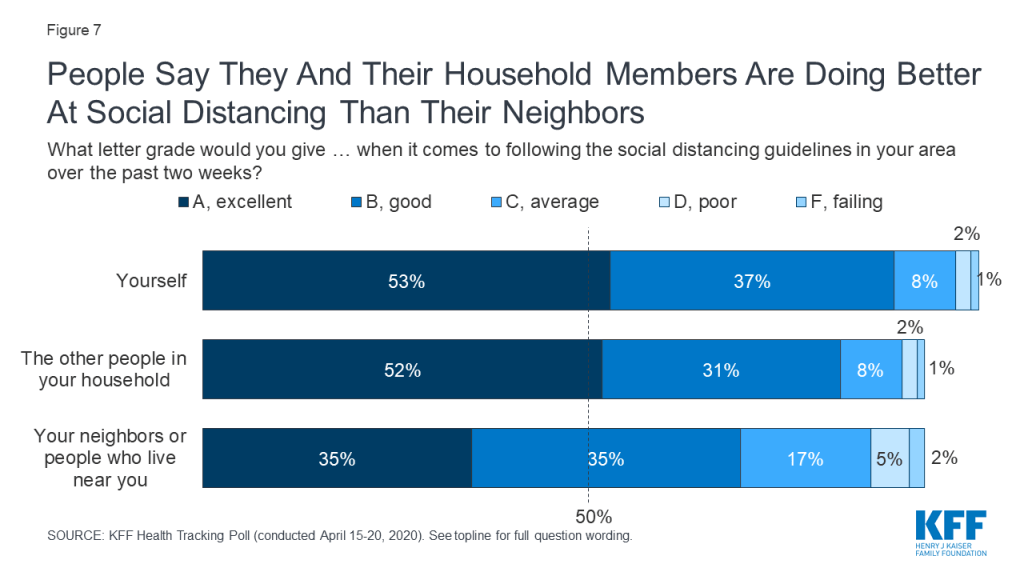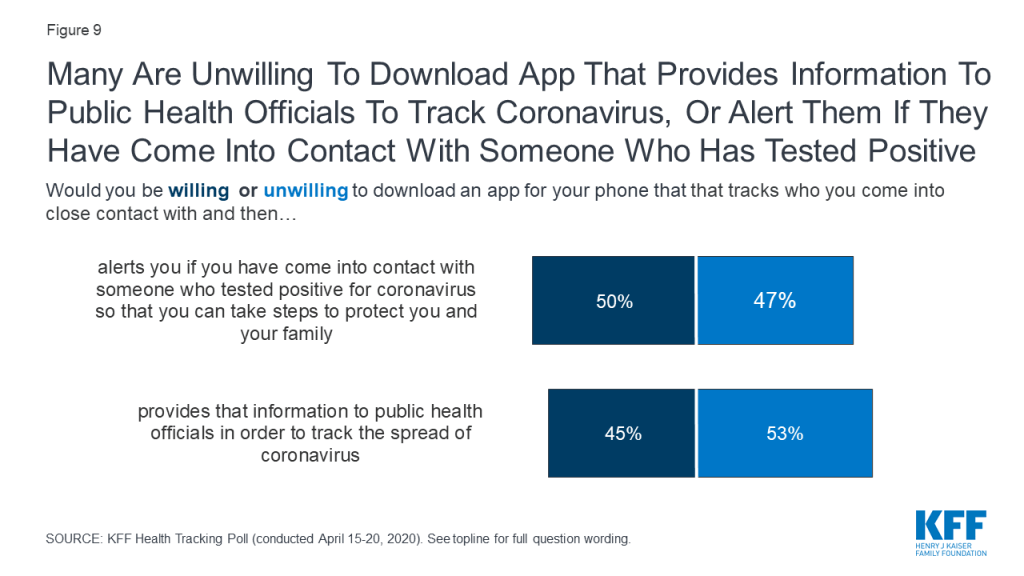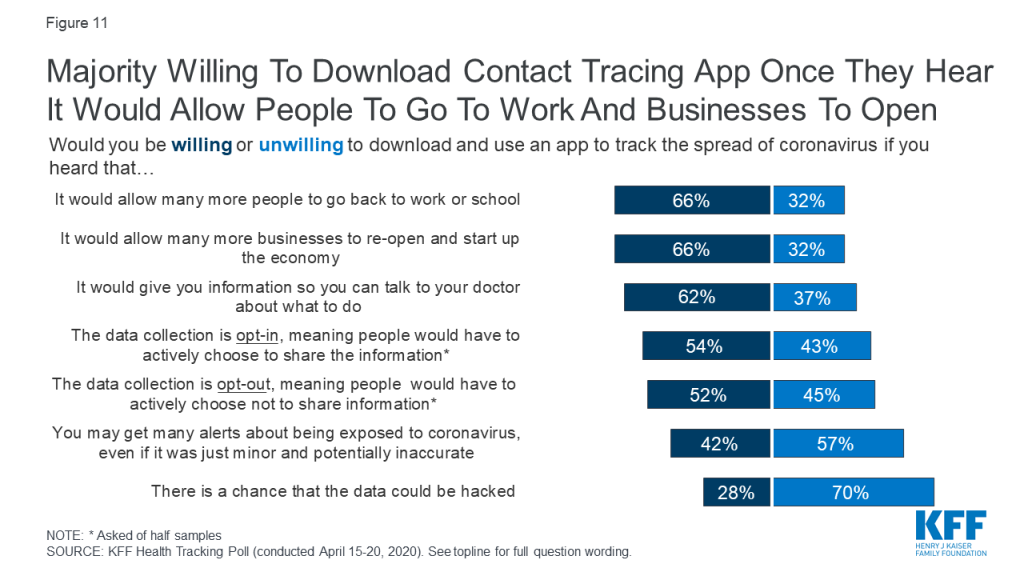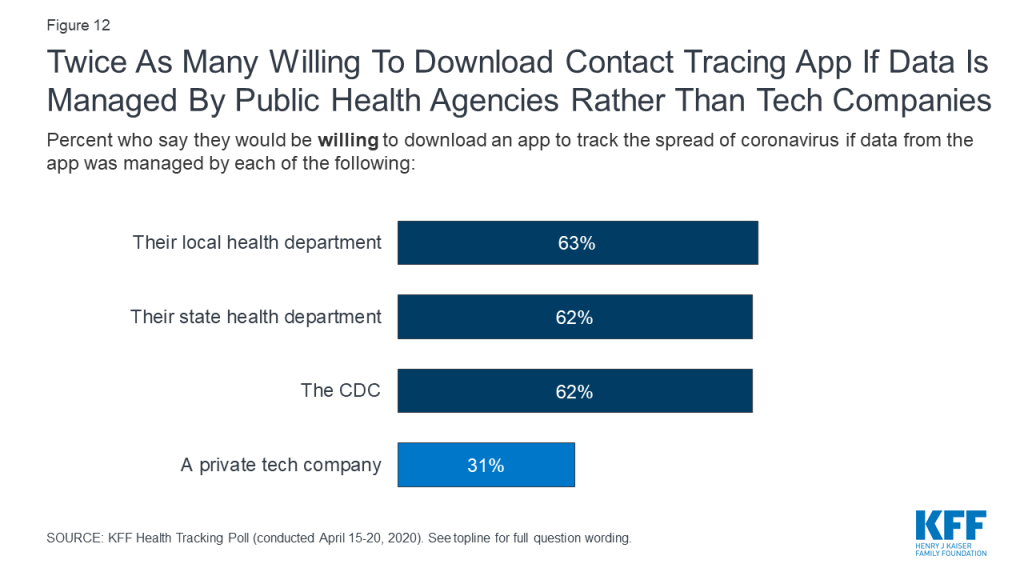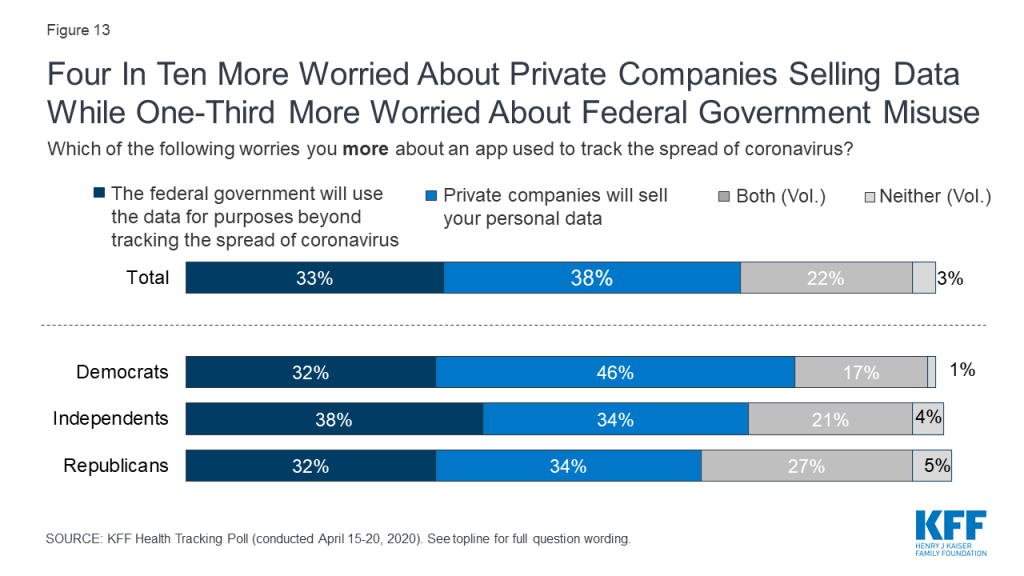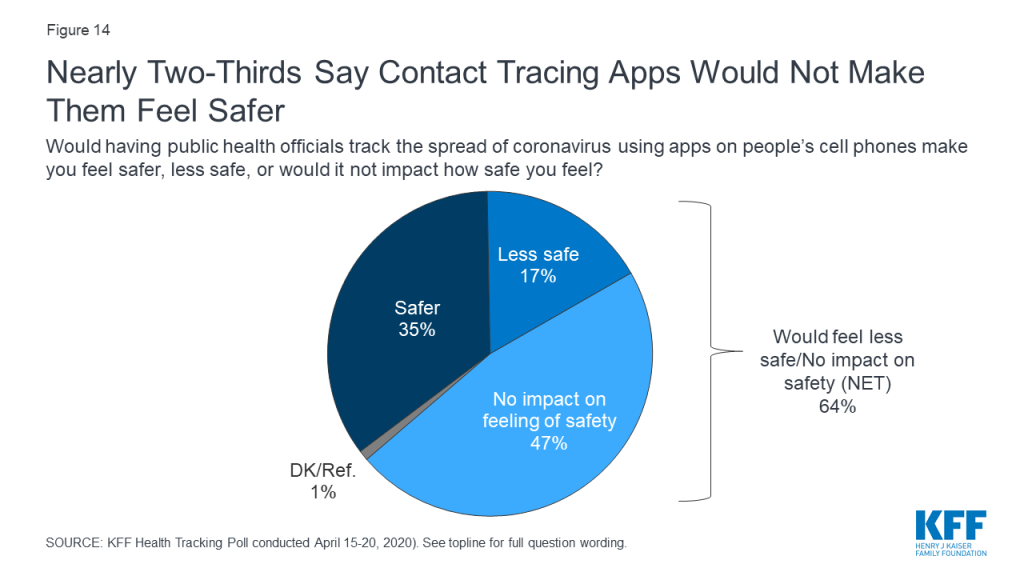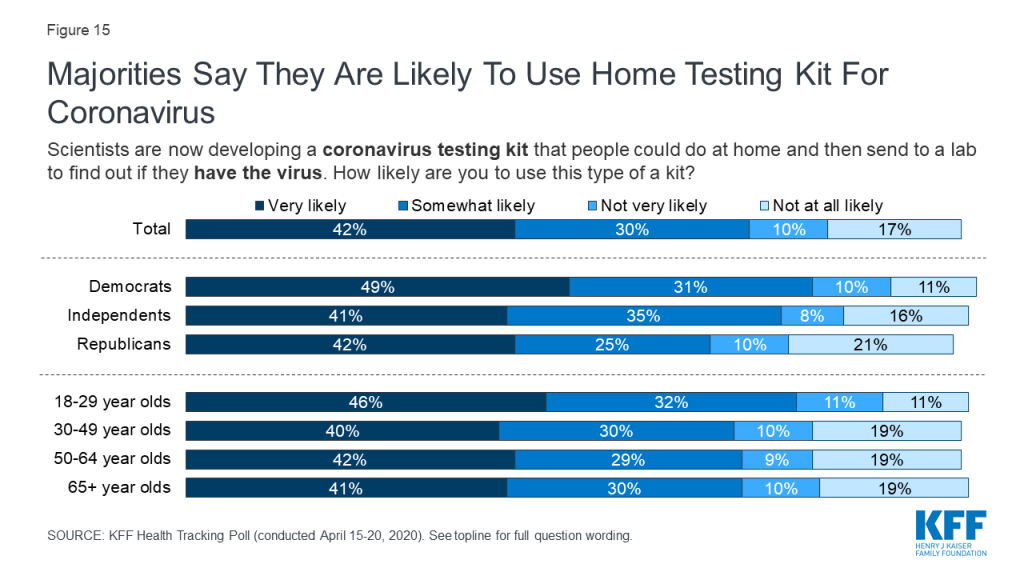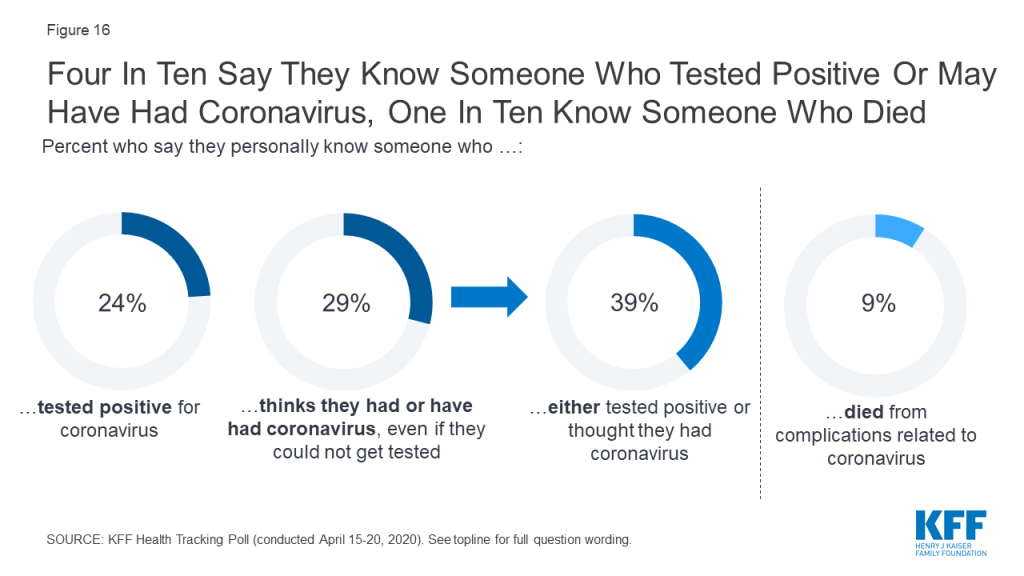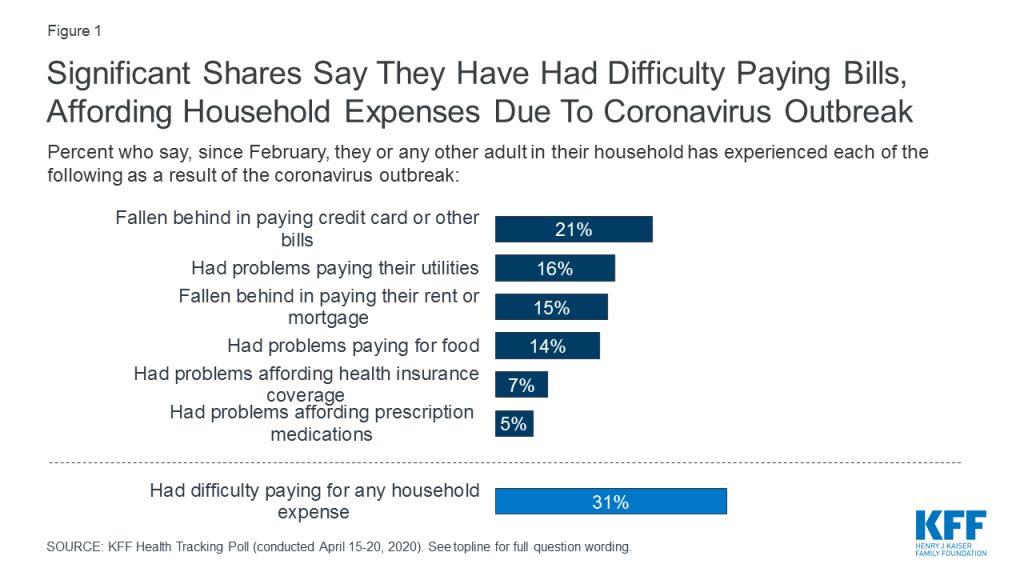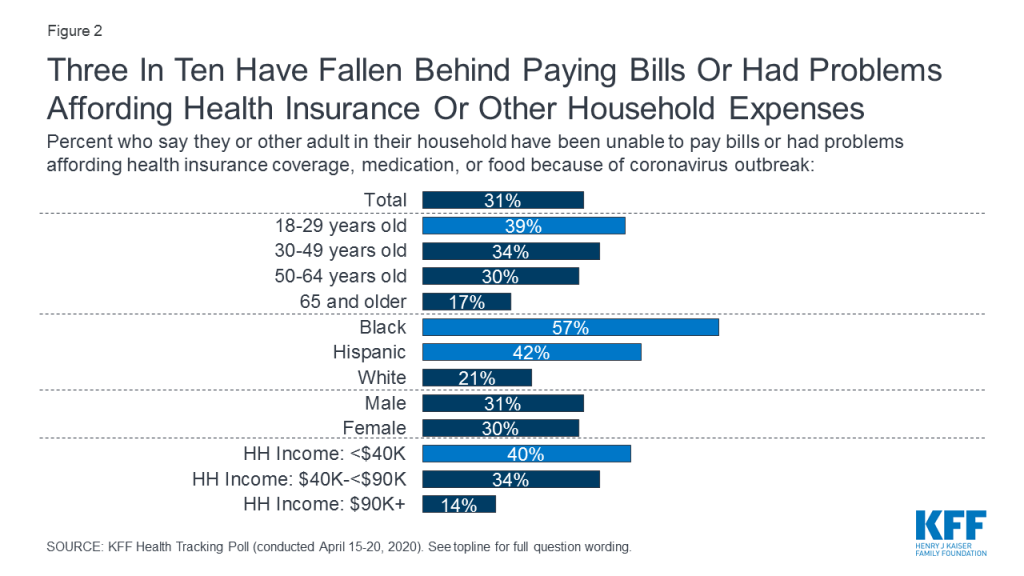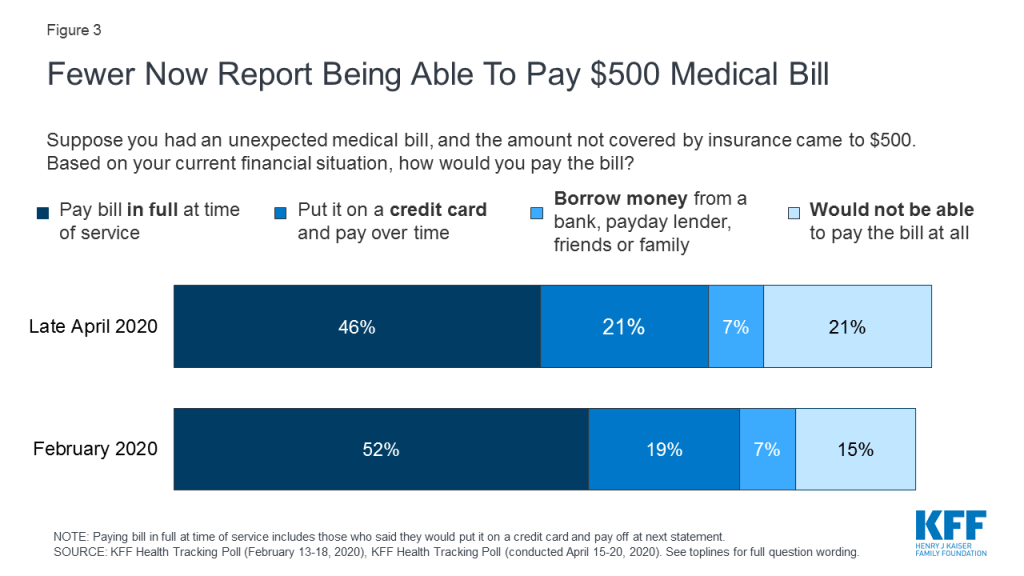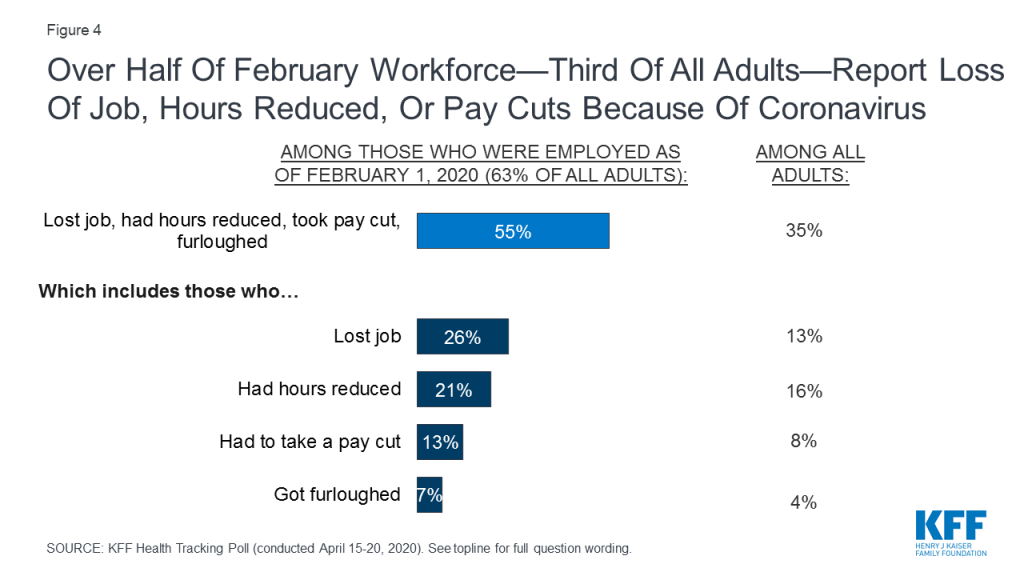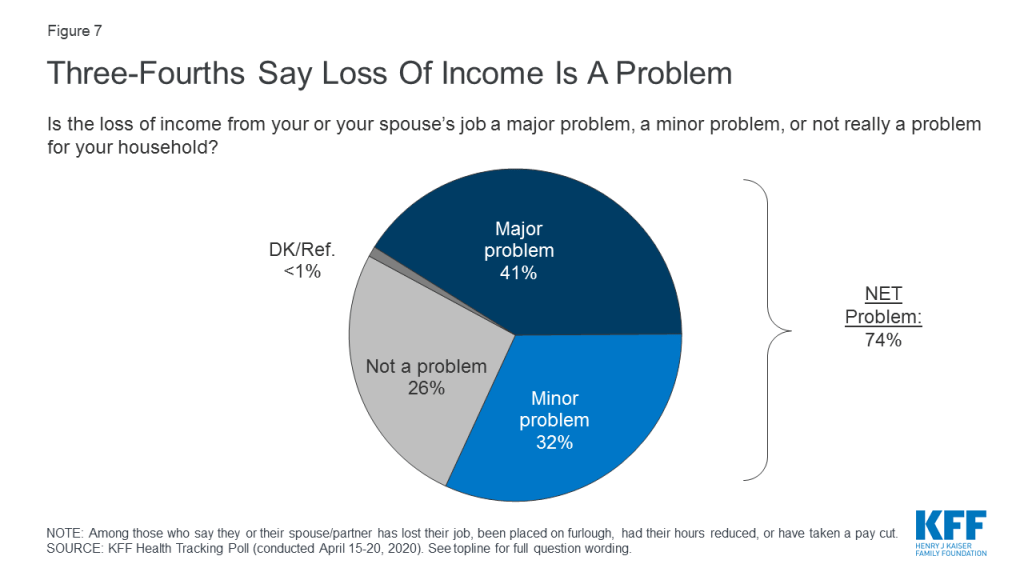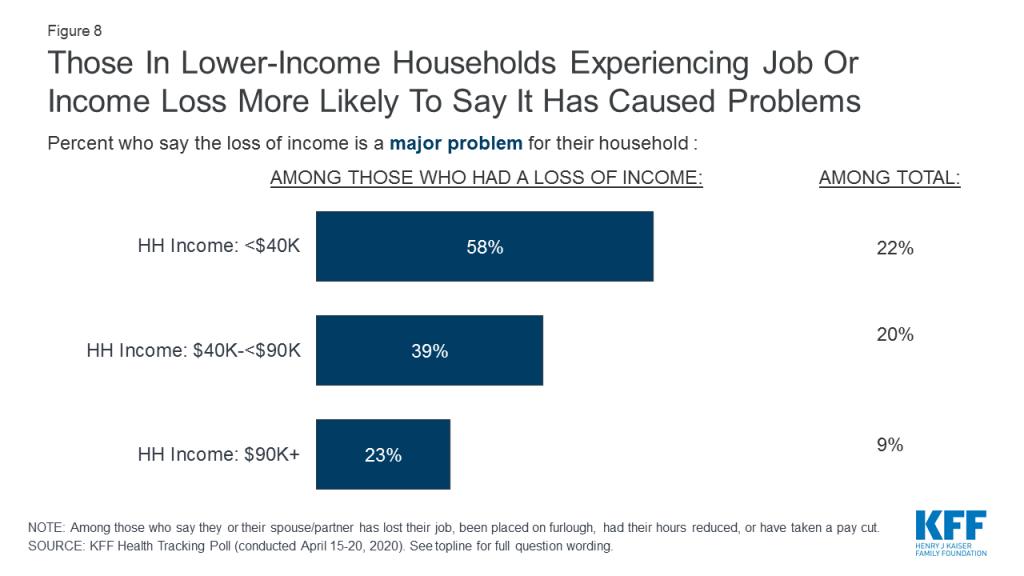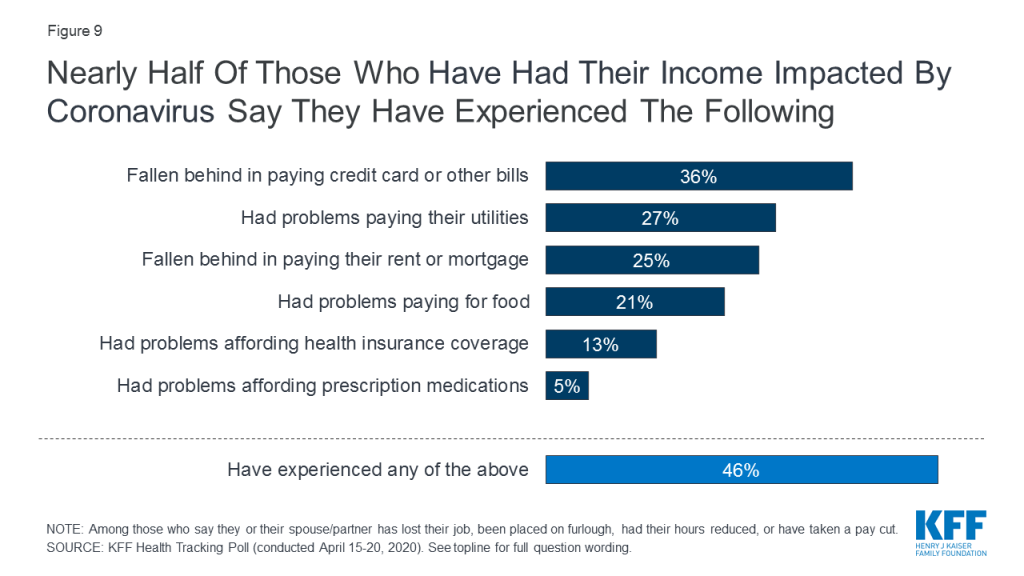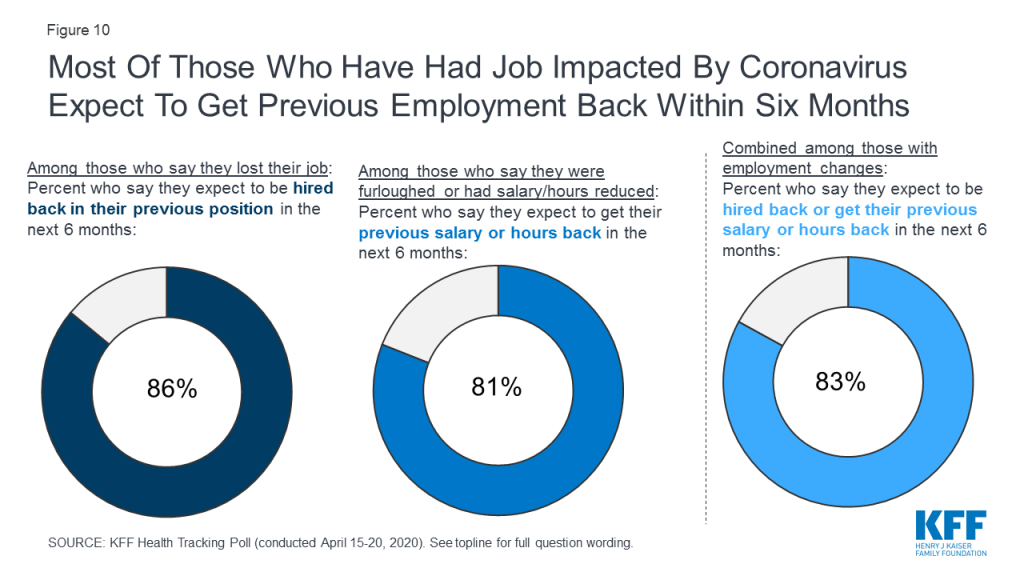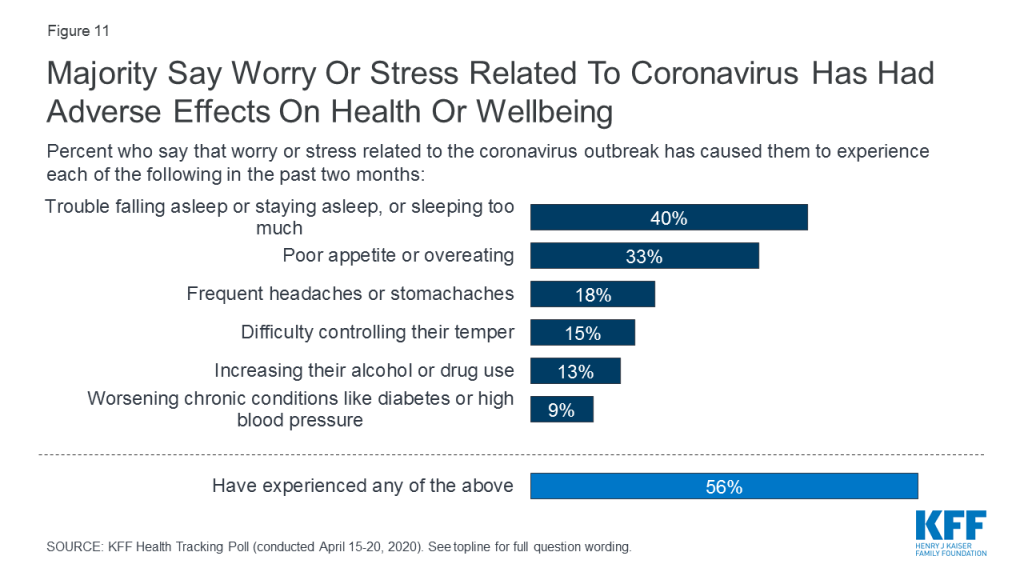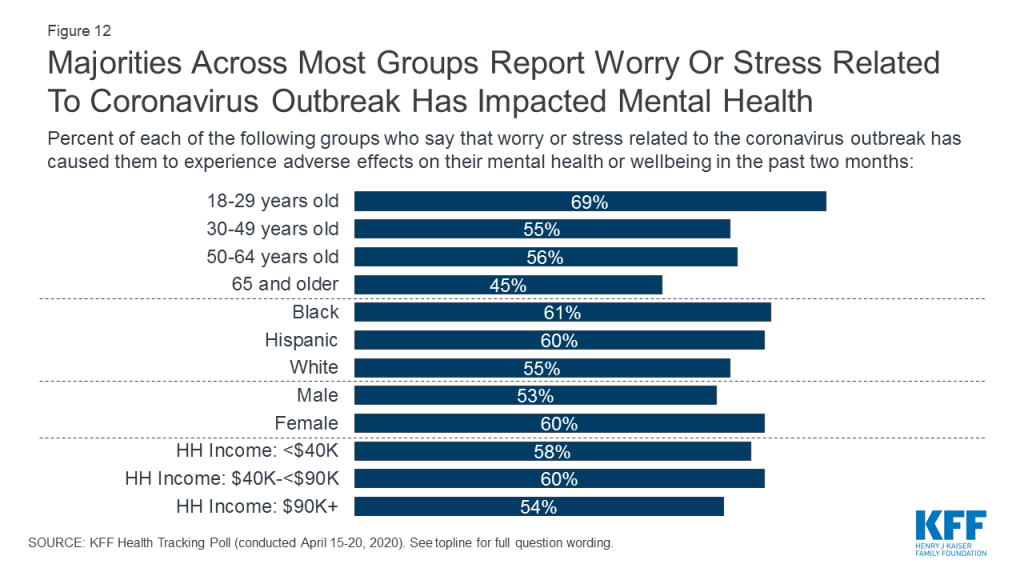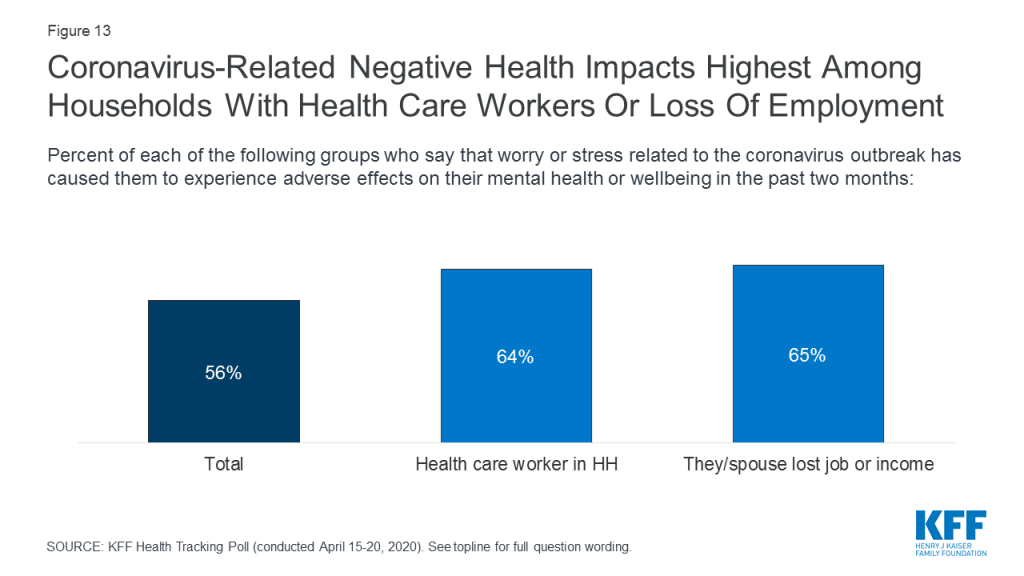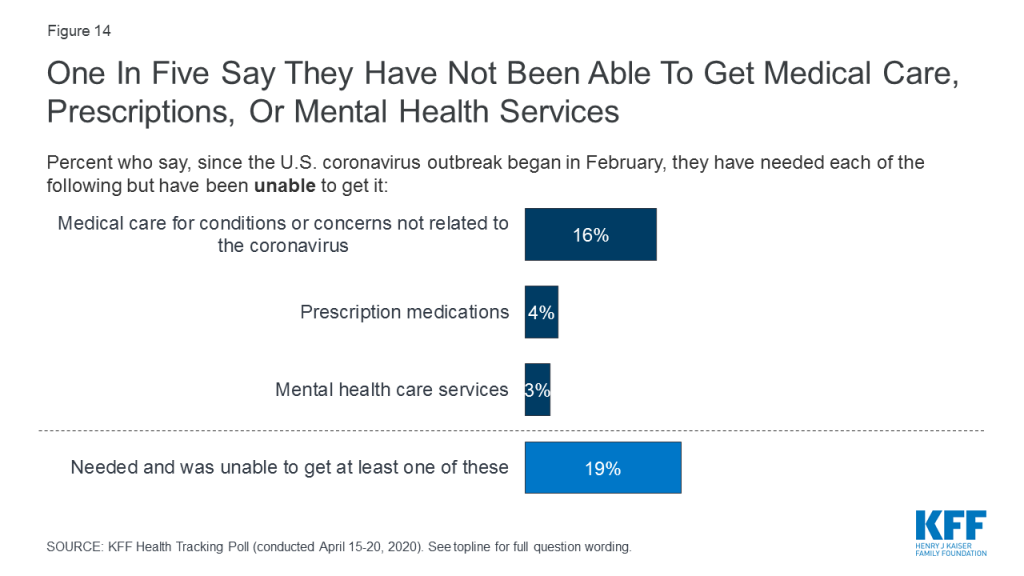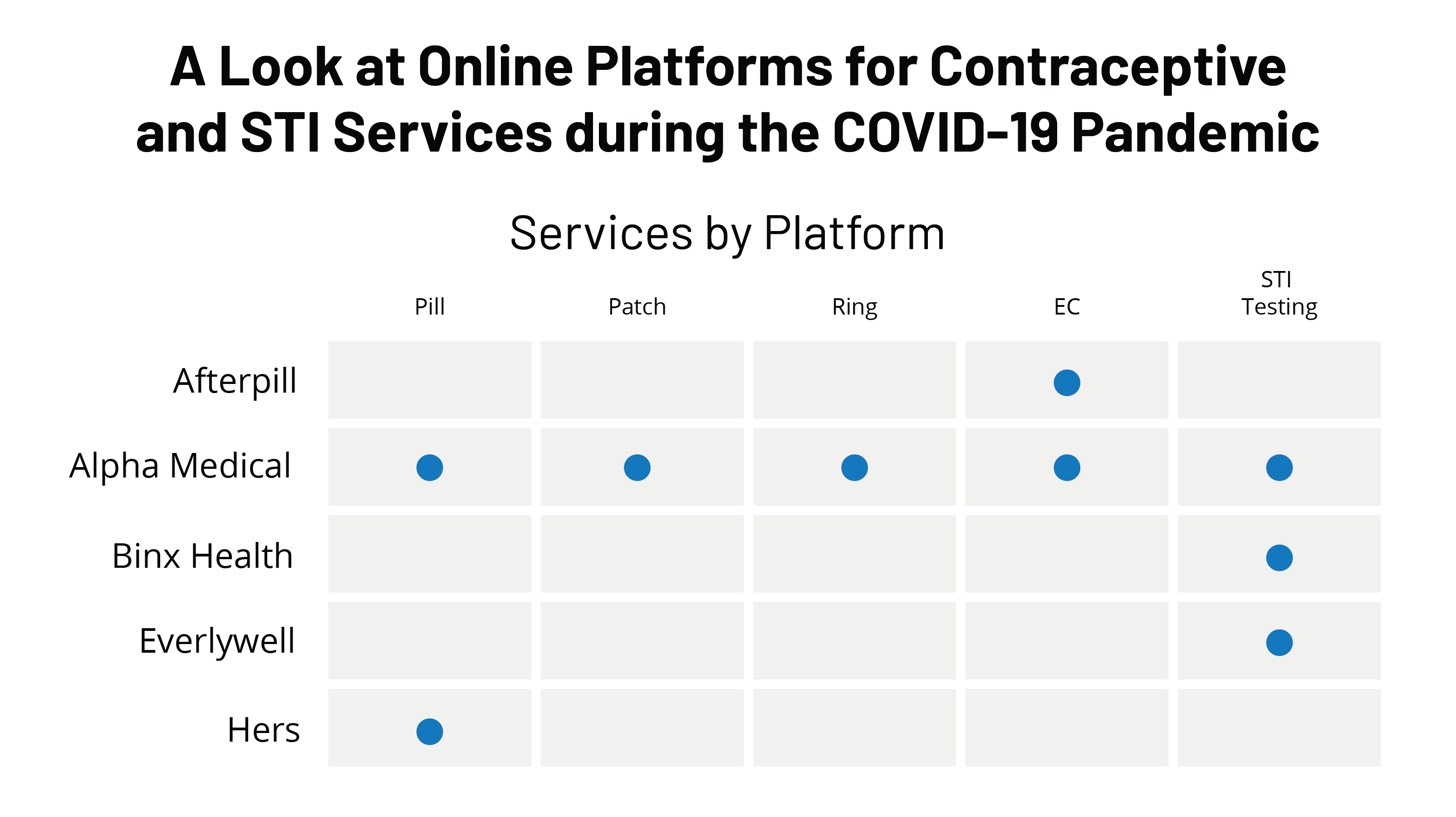Preparing for COVID-19 in Low- and Middle-Income Countries: Leveraging U.S. Global Health Assets
As the COVID-19 pandemic continues to worsen, there is growing concern about its impact in low- and middle-income countries (LMICs), particularly those in sub-Saharan Africa, home to more than one billion people. Cases have now been reported in many LMICs and are rising rapidly in some. Should coronavirus spread even more significantly in sub-Saharan Africa and elsewhere, the impact could be extreme, given already low-resourced health systems and multiple other health challenges.
The United States has begun to respond, with Congress appropriating more than $2 billion in emergency funding to address COVID-19 in LMICs and the State Department and USAID providing resources to a growing list of countries. This data note updates an earlier analysis that examined where the U.S. government already had existing global health assets that could be mobilized to address COVID-19. It includes the latest case numbers, expands beyond health to identify countries where the U.S. also provides (non-health) development assistance, and identifies the most recent list of countries receiving COVID-19 assistance from the U.S. In addition, it indicates the level of COVID-19 preparedness in each country, based on the World Health Organization’s country preparedness and readiness assessment index (which rates countries from Level 1, least prepared to Level 5, most prepared).
Table 1 provides a regional summary of where the U.S. supports global health programs and/or provides COVID-19 assistance. Table 2 provides a full list of all countries identified, including reported cases of COVID-19 (as of April 21, 2020), total bilateral U.S. funding for global health programs, country-level U.S. COVID-19 funding, and COVID-19 preparedness capacity level.1 It also indicates whether the U.S. provides other (non-health) development assistance. Key findings are as follows:
- There are a total of 108 countries that received either U.S. bilateral global health assistance in FY 2018 (64 countries) and/or are receiving U.S. COVID-19 assistance (102 countries).2
- Almost all of these countries (105 of 108) had reported COVID-19 cases as of April 21, 2020.
- Of the 102 countries receiving U.S. COVID-19 funding, 52 are also countries that received U.S. global health assistance in FY 2018.
- Almost all of these countries (103 of 108) receive other, non-health, U.S. development assistance, which may include assistance for agriculture, education, peace and security, etc.
- Most of the countries receiving U.S. assistance are in Africa, followed by Asia and Latin America and the Caribbean. Most of the reported cases in these countries are in Latin America and the Caribbean, followed by South/Central Asia.
- PEPFAR and the maternal and child health program, respectively, operate in the greatest number of countries (38 each), followed by the family planning and reproductive health program (36). Most countries (over 90%) in each of these program areas are also receiving U.S. COVID-19 funding.
- Of the 107 countries assigned a COVID-19 preparedness capacity level by WHO, almost all (94) are at Level 3 or below, with more than half (57) designated as Level 3 (capacity is ≤60%), a third (36) as Level 2 (capacity is ≤40%), and one as Level 1 (capacity is ≤20%). The remaining 13 include 11 countries designated as Level 4 (capacity is ≤80%) and two designated as Level 5 (capacity is >80%).
Overall, we found much overlap between the countries being provided with COVID-19 support by the U.S. and those with existing U.S. global health assets, suggesting an opportunity to leverage longstanding programs and expertise. At the same time, however, it is highly likely that many other LMIC countries not currently receiving U.S. COVID-19 funding will experience growing numbers of cases and require enhanced assistance. Further, it remains unclear how ongoing U.S. global health efforts will be impacted, including whether some will be scaled back as resources, including personnel, are diverted to address COVID-19 and/or if country health systems become overwhelmed by COVID-19, undermining their ability to continue. Through two of the three emergency supplemental bills for the coronavirus response passed thus far, the U.S. has allocated approximately $2.4 billion in funding specifically for U.S. global health and other assistance for the global outbreak, although it is likely that additional funding will be needed. Still, given the need for the U.S. (and other donors) to confront their own COVID-19 epidemics, any additional foreign assistance may face stiff competition with growing domestic demands, including for stimulating the economy.
| Table 1: COVID-19 in Countries Receiving Bilateral U.S. Global Health and/or COVID-19 Assistance, by Region | ||||||
| Region | Countries Receiving U.S. Global Health and/or COVID-19 Assistance | |||||
| # of Countries: | # of COVID-19 Cases(as of 4/21/20) | |||||
| Overall | Receiving U.S. Global Health Assistance | Receiving U.S. COVID-19 Assistance | With COVID-19 Cases (as of 4/21/20) | With Low COVID-19 Preparedness Capacity Level(Levels 1-3*) | ||
| Africa | 45 | 34 | 41 | 44 | 42 | 24,088 |
| East Asia/Pacific | 11 | 10 | 11 | 11 | 8 | 22,621 |
| Europe/Eurasia | 17 | 1 | 17 | 17 | 11 | 321,552 |
| Latin America/Caribbean | 17 | 9 | 15 | 17 | 15 | 96,420 |
| Near East | 6 | 2 | 6 | 6 | 6 | 3,216 |
| South/Central Asia | 12 | 8 | 12 | 10 | 12 | 38,741 |
| TOTAL | 108 | 64 | 102 | 105 | 94 | 506,638 |
| NOTES: Reflects countries receiving bilateral assistance through USAID and the Department of State in FY 2018 except NTD countries, which reflect information available on Nov. 13, 2019, and GHS countries, which reflect FY 2019 presence. Reflects all countries receiving COVID-19 assistance from the U.S. government as announced as of April 16, 2020 and includes some high-income countries. * WHO-designated level of a country’s ability to respond to COVID-19 based on capacity and risk assessments: Level 1 indicates that the country’s health system is ≤20% prepared, Level 2 is ≤40%, Level 3 is ≤60%, Level 4 is ≤80%, and Level 5 is >80%. # of cases includes confirmed and presumed positive cases.SOURCES: KFF analysis of data from U.S. Foreign Assistance Dashboard (foreignassistance.gov, accessed 11-12-19); USAID NTD Program website (NeglectedDiseases.gov, as of 11-13-19); KFF personal communication with USAID, 12-19; U.S. Department of State, “UPDATE: The United States Is Continuing to Lead the Humanitarian and Health Assistance Response to COVID-19,” fact sheet, April 16, 2020; WHO, COVID-19 Strategic Preparedness and Response Plan: Country Preparedness and Response Status for COVID-19 as of 13 April 2020; Johns Hopkins University, Coronavirus Resource Center, accessed: https://coronavirus.jhu.edu/map.html, as of April 21, 2020. | ||||||
| Table 2: COVID-19 in Countries Receiving Bilateral U.S. Global Health and/or COVID-19 Assistance | |||||||||||||||
| Region | Country | # of COVID-19 Cases (as of 4/21/20) | U.S. Global Health Assistance(FY 2018^) | # of U.S. Global Health Programs | Global Health Program Presence* | U.S. COVID-19 Assistance^(as of 4/16/20) | COVID-19 Preparedness Capacity Level+ | Recipient of Other U.S. Foreign Assistance(FY 2018) | |||||||
| Family Planning/ Reproductive Health | PEPFAR (HIV) | Malaria | Maternal & Child Health | Nutrition | Tuberculosis | Global Health Security | NTDs/Other PH Threats | ||||||||
| South/Central Asia | Afghanistan | 1,092 | $39,500,000 | 3 | X | – | – | X | – | X | – | – | $18,000,000 | 2 | X |
| Europe/Eurasia | Albania | 609 | — | — | – | – | – | – | – | – | – | – | $1,200,000 | 3 | X |
| Africa | Algeria | 2,811 | — | — | – | – | – | – | – | – | – | – | $500,000 | 4 | X |
| Africa | Angola | 24 | $37,418,000 | 3 | X | X | X | – | – | – | – | – | $570,000 | 3 | X |
| Europe/Eurasia | Armenia | 1,401 | — | — | – | – | – | – | – | – | – | – | $1,700,000 | 3 | X |
| Europe/Eurasia | Azerbaijan | 1,480 | — | — | – | – | – | – | – | – | – | – | $1,700,000 | 3 | X |
| South/Central Asia | Bangladesh | 3,382 | $66,000,000 | 6 | X | – | – | X | X | X | X | X | $9,600,000 | 3 | X |
| Europe/Eurasia | Belarus | 6,723 | — | — | – | – | – | – | – | – | – | – | $1,300,000 | 3 | X |
| Latin America/Caribbean | Belize | 18 | — | — | – | – | – | – | – | – | – | – | $300,000 | 3 | X |
| Africa | Benin | 54 | $24,000,000 | 4 | X | – | X | X | – | – | – | X | — | 2 | X |
| South/Central Asia | Bhutan | 6 | — | — | – | – | – | – | – | – | – | – | $500,000 | 3 | – |
| Latin America/Caribbean | Bolivia | 598 | — | — | – | – | – | – | – | – | – | – | $750,000 | 2 | – |
| Europe/Eurasia | Bosnia and Herzegovina | 1,342 | — | — | – | – | – | – | – | – | – | – | $1,200,000 | 2 | X |
| Africa | Botswana | 20 | $64,764,000 | 1 | – | X | – | – | – | – | – | – | $1,500,000 | 2 | X |
| Latin America/Caribbean | Brazil | 43,079 | $300,000 | 2 | – | X | – | – | – | – | – | X | — | 4 | X |
| Europe/Eurasia | Bulgaria | 975 | — | — | – | – | – | – | – | – | – | – | $500,000 | 4 | X |
| Africa | Burkina Faso | 600 | $29,000,000 | 5 | X | – | X | X | – | – | X | X | $6,000,000 | 2 | X |
| East Asia/Pacific | Burma | 121 | $30,482,000 | 4 | – | X | X | X | – | X | – | – | $7,300,000 | 3 | X |
| Africa | Burundi | 5 | $31,340,000 | 4 | X | X | X | X | – | – | – | – | — | 2 | X |
| East Asia/Pacific | Cambodia | 122 | $33,911,000 | 8 | X | X | X | X | X | X | X | X | $4,000,000 | 3 | X |
| Africa | Cameroon | 1,163 | $63,674,000 | 4 | – | X | X | – | – | – | X | X | $8,000,000 | 3 | X |
| Africa | Central African Republic | 14 | — | — | – | – | – | – | – | – | – | – | $5,200,000 | 1 | X |
| Africa | Chad | 33 | — | — | – | – | – | – | – | – | – | – | $3,000,000 | 2 | X |
| Latin America/Caribbean | Colombia | 4,149 | — | 1 | – | – | – | – | – | – | – | X | $10,400,000 | 3 | X |
| Africa | Côte d’Ivoire | 916 | $135,876,000 | 6 | X | X | X | X | – | – | X | X | $1,600,000 | 3 | X |
| Africa | Dem. Rep. of the Congo | 350 | $181,458,000 | 8 | X | X | X | X | X | X | X | X | $14,400,000 | 3 | X |
| Africa | Djibouti | 945 | $300,000 | 1 | – | X | – | – | – | – | – | – | $500,000 | 2 | X |
| Latin America/Caribbean | Dominican Republic | 5,044 | $13,901,000 | 1 | – | X | – | – | – | – | – | – | $1,400,000 | 3 | X |
| Latin America/Caribbean | Ecuador | 10,398 | — | 1 | – | – | – | – | – | – | – | X | $2,000,000 | 3 | X |
| Africa | Egypt | 3,490 | $10,050,000 | 2 | X | – | – | – | – | – | X | – | — | 4 | X |
| Latin America/Caribbean | El Salvador | 225 | — | — | – | – | – | – | – | – | – | – | $2,600,000 | 3 | X |
| Africa | Eswatini | 31 | $65,768,000 | 1 | – | X | – | – | – | – | – | – | $750,000 | 3 | X |
| Africa | Ethiopia | 114 | $204,363,000 | 8 | X | X | X | X | X | X | X | X | $9,000,000 | 3 | X |
| Europe/Eurasia | Georgia | 408 | — | — | – | – | – | – | – | – | – | – | $1,700,000 | 3 | X |
| Africa | Ghana | 1,042 | $68,233,000 | 7 | X | X | X | X | X | – | X | X | $1,600,000 | 3 | X |
| Europe/Eurasia | Greece | 2,401 | — | — | – | – | – | – | – | – | – | – | $500,000 | 4 | X |
| Latin America/Caribbean | Guatemala | 294 | $13,000,000 | 4 | X | – | – | X | X | – | – | X | $2,400,000 | 2 | X |
| Africa | Guinea | 688 | $23,000,000 | 5 | X | – | X | X | – | – | X | X | $500,000 | 3 | X |
| Latin America/Caribbean | Guyana | 81 | — | 1 | – | – | – | – | – | – | – | X | — | 3 | X |
| Latin America/Caribbean | Haiti | 57 | $123,586,000 | 5 | X | X | – | X | X | – | – | X | $13,200,000 | 2 | X |
| Latin America/Caribbean | Honduras | 494 | — | — | – | – | – | – | – | – | – | – | $2,400,000 | 2 | X |
| South/Central Asia | India | 20,080 | $66,216,000 | 5 | X | X | – | X | – | X | X | – | $5,900,000 | 3 | X |
| East Asia/Pacific | Indonesia | 7,135 | $35,962,000 | 5 | – | X | – | X | – | X | X | X | $5,000,000 | 3 | X |
| Near East | Iraq | 1,602 | — | — | – | – | – | – | – | – | – | – | $25,600,000 | 2 | X |
| Europe/Eurasia | Italy | 183,957 | — | — | – | – | – | – | – | – | – | – | $50,000,000 | 5 | – |
| Latin America/Caribbean | Jamaica | 223 | — | — | – | – | – | – | – | – | – | – | $700,000 | 3 | X |
| Near East | Jordan | 428 | $21,000,000 | 2 | X | – | – | – | – | – | X | – | $8,000,000 | 3 | X |
| South/Central Asia | Kazakhstan | 1,995 | — | — | – | – | – | – | – | – | – | – | $1,600,000 | 3 | X |
| Africa | Kenya | 296 | $523,112,000 | 7 | X | X | X | X | X | X | X | – | $4,500,000 | 3 | X |
| Europe/Eurasia | Kosovo | 510 | — | — | – | – | – | – | – | – | – | – | $1,100,000 | — | X |
| South/Central Asia | Kyrgyzstan | 590 | $4,300,000 | 1 | – | – | – | – | – | X | – | – | $900,000 | 2 | X |
| East Asia/Pacific | Laos | 19 | $3,500,000 | 2 | – | – | – | – | X | – | – | X | $3,500,000 | 2 | X |
| Near East | Lebanon | 677 | — | — | – | – | – | – | – | – | – | – | $13,300,000 | 3 | X |
| Africa | Lesotho | – | $79,574,000 | 1 | – | X | – | – | – | – | – | – | $750,000 | 2 | X |
| Africa | Liberia | 101 | $34,500,000 | 5 | X | X | X | X | – | – | X | – | $1,000,000 | 3 | X |
| Africa | Libya | 51 | — | — | – | – | – | – | – | – | – | – | $6,000,000 | 2 | X |
| Africa | Madagascar | 121 | $52,000,000 | 4 | X | – | X | X | – | – | X | – | $2,500,000 | 2 | X |
| Africa | Malawi | 18 | $194,893,000 | 6 | X | X | X | X | X | X | – | – | $4,500,000 | 3 | X |
| East Asia/Pacific | Malaysia | 5,482 | — | 1 | – | – | – | – | – | – | X | – | $200,000 | 5 | X |
| Africa | Mali | 258 | $66,300,000 | 7 | X | X | X | X | X | – | X | X | $5,700,000 | 3 | X |
| Africa | Mauritania | 7 | — | — | – | – | – | – | – | – | – | – | $250,000 | 2 | X |
| Africa | Mauritius | 328 | — | — | – | – | – | – | – | – | – | – | $500,000 | 4 | X |
| Latin America/Caribbean | Mexico | 8,772 | — | 1 | – | – | – | – | – | – | – | X | $500,000 | 4 | X |
| Europe/Eurasia | Moldova | 2,614 | — | — | – | – | – | – | – | – | – | – | $1,200,000 | 3 | X |
| East Asia/Pacific | Mongolia | 34 | — | — | – | – | – | – | – | – | – | – | $1,200,000 | 3 | X |
| Europe/Eurasia | Montenegro | 313 | — | — | – | – | – | – | – | – | – | – | $300,000 | 3 | X |
| Africa | Morocco | 3,209 | — | — | – | – | – | – | – | – | – | – | $1,700,000 | 3 | X |
| Africa | Mozambique | 39 | $427,685,000 | 7 | X | X | X | X | X | X | – | X | $5,800,000 | 3 | X |
| Africa | Namibia | 16 | $66,879,000 | 1 | – | X | – | – | – | – | – | – | $750,000 | 2 | X |
| South/Central Asia | Nepal | 43 | $43,866,000 | 6 | X | X | – | X | X | – | X | X | $1,800,000 | 3 | X |
| Africa | Niger | 657 | $22,000,000 | 4 | X | – | X | X | – | – | – | X | $4,000,000 | 3 | X |
| Africa | Nigeria | 665 | $398,561,000 | 7 | X | X | X | X | X | X | – | X | $21,400,000 | 3 | X |
| Europe/Eurasia | North Macedonia | 1,231 | — | — | – | – | – | – | – | – | – | – | $1,100,000 | 3 | – |
| South/Central Asia | Pakistan | 9,565 | $7,000,000 | 1 | – | – | – | X | – | – | – | – | $9,400,000 | 2 | X |
| Latin America/Caribbean | Panama | 4,658 | — | — | – | – | – | – | – | – | – | – | $750,000 | 2 | X |
| East Asia/Pacific | Papua New Guinea | 7 | $5,474,000 | 1 | – | X | – | – | – | – | – | – | $1,200,000 | 2 | X |
| Latin America/Caribbean | Paraguay | 208 | — | — | – | – | – | – | – | – | – | – | $1,300,000 | 2 | X |
| Latin America/Caribbean | Peru | 17,837 | — | — | – | – | – | – | – | – | – | – | $2,500,000 | 3 | X |
| East Asia/Pacific | Philippines | 6,599 | $28,500,000 | 3 | X | – | – | – | – | X | – | X | $6,000,000 | 3 | X |
| Africa | Republic of Congo | 165 | — | — | – | – | – | – | – | – | – | – | $250,000 | 3 | X |
| Europe/Eurasia | Romania | 9,242 | — | — | – | – | – | – | – | – | – | – | $800,000 | 4 | X |
| Africa | Rwanda | 150 | $114,591,000 | 6 | X | X | X | X | X | – | X | – | $2,000,000 | 3 | X |
| Africa | Senegal | 412 | $59,035,000 | 7 | X | X | X | X | X | – | X | X | $3,900,000 | 3 | X |
| Europe/Eurasia | Serbia | 6,630 | — | — | – | – | – | – | – | – | – | – | $1,200,000 | 3 | X |
| Africa | Sierra Leone | 50 | $19,500,000 | 6 | X | X | X | X | – | – | X | X | $400,000 | 3 | X |
| Africa | Somalia | 286 | — | — | – | – | – | – | – | – | – | – | $12,500,000 | 2 | X |
| Africa | South Africa | 3,465 | $580,905,000 | 2 | – | X | – | – | – | X | – | – | $8,400,000 | 3 | X |
| Africa | South Sudan | 4 | $36,545,000 | 3 | X | X | – | X | – | – | – | – | $13,100,000 | 2 | X |
| South/Central Asia | Sri Lanka | 310 | — | — | – | – | – | – | – | – | – | – | $1,300,000 | 3 | X |
| Africa | Sudan | 107 | — | — | – | – | – | – | – | – | – | – | $13,700,000 | 3 | X |
| Near East | Syria | 42 | — | — | – | – | – | – | – | – | – | – | $18,000,000 | 2 | – |
| South/Central Asia | Tajikistan | – | $7,750,000 | 3 | – | – | – | X | X | X | – | – | $866,000 | 2 | X |
| Africa | Tanzania | 254 | $480,839,000 | 8 | X | X | X | X | X | X | X | X | $1,400,000 | 3 | X |
| East Asia/Pacific | Thailand | 2,811 | — | 1 | – | – | – | – | – | – | X | – | $2,700,000 | 4 | X |
| East Asia/Pacific | Timor-Leste | 23 | $2,000,000 | 2 | X | – | – | X | – | – | – | – | $1,100,000 | 2 | X |
| Africa | Togo | 86 | — | 1 | – | – | – | – | – | – | – | X | — | 2 | X |
| Africa | Tunisia | 884 | — | — | – | – | – | – | – | – | – | – | $600,000 | 3 | X |
| Europe/Eurasia | Turkey | 95,591 | — | — | – | – | – | – | – | – | – | – | $800,000 | 4 | X |
| South/Central Asia | Turkmenistan | – | — | — | – | – | – | – | – | – | – | – | $920,000 | 3 | X |
| Africa | Uganda | 61 | $463,396,000 | 8 | X | X | X | X | X | X | X | X | $3,600,000 | 3 | X |
| Europe/Eurasia | Ukraine | 6,125 | $34,644,000 | 3 | – | X | – | X | – | X | – | – | $9,100,000 | 2 | X |
| South/Central Asia | Uzbekistan | 1,678 | $4,000,000 | 1 | – | – | – | – | – | X | – | – | $848,000 | 2 | X |
| Latin America/Caribbean | Venezuela | 285 | — | 1 | – | – | – | – | – | – | – | X | $9,000,000 | 2 | X |
| East Asia/Pacific | Vietnam | 268 | $31,349,000 | 4 | – | X | – | – | – | X | X | X | $4,500,000 | 4 | X |
| Near East | West Bank/ Gaza | 466 | — | — | – | – | – | – | – | – | – | – | $5,000,000 | 2 | X |
| Near East | Yemen | 1 | $3,500,000 | 1 | – | – | – | X | – | – | – | – | $500,000 | 2 | X |
| Africa | Zambia | 70 | $415,961,000 | 6 | X | X | X | X | X | X | – | – | $3,400,000 | 2 | X |
| Africa | Zimbabwe | 28 | $170,107,000 | 5 | X | X | X | X | – | X | – | – | $3,000,000 | 3 | X |
| Number of Countries | 108 | 506,638cases | $5,765,368,000 | 64 | 36 | 38 | 27 | 38 | 20 | 23 | 26 | 32 | $463,054,000(102 countries) | 107 | 103 |
| NOTES: # of cases includes confirmed and presumed positive cases. ^ Total does not include some country-level funding (i.e., NTD and global health security program funding) that is not available on ForeignAssistance.gov; it also does not include funding for regional or “worldwide” program efforts that may reach additional countries. NTDs are neglected tropical diseases. * X indicates country receiving bilateral assistance through USAID and the Department of State in FY 2018 except NTD countries, which reflect information available on Nov. 13, 2019, and GHS countries, which reflect FY 2019 presence. ^ U.S. COVID-19 Assistance reflects all countries receiving COVID-19 assistance from the U.S. government and includes some high-income countries. Does not include funding specified for regional programs that may reach additional countries. + The COVID-19 Preparedness Capacity Level indicates the WHO-designated level of that country’s ability to respond to COVID-19 based on capacity and risk assessments: Level 1 indicates that the country’s health system is ≤20% prepared, Level 2 is ≤40%, Level 3 is ≤60%, Level 4 is ≤80%, and Level 5 is >80%. “–” indicates no cases have been reported, country-level funding is not specified for this country, country does not have a USG program that is supported by country-level funding available on ForeignAssistance.gov, or COVID-19 preparedness capacity level not specified for country.SOURCES: Johns Hopkins University, Coronavirus Resource Center, accessed: https://coronavirus.jhu.edu/map.html, as of April 21, 2020; KFF analysis of data from U.S. Foreign Assistance Dashboard (foreignassistance.gov, accessed 11-12-19); USAID NTD Program website (NeglectedDiseases.gov, as of 11-13-19); KFF personal communication with USAID, 12-19; U.S. Department of State, “UPDATE: The United States Is Continuing to Lead the Humanitarian and Health Assistance Response to COVID-19,” fact sheet, April 16, 2020; WHO, COVID-19 Strategic Preparedness and Response Plan: Country Preparedness and Response Status for COVID-19 as of 13 April 2020; KFF analysis of data from U.S. Foreign Assistance Dashboard (foreignassistance.gov, accessed April 6, 2020). | |||||||||||||||
- The preparedness and response categorization (Levels 1-5) is based on the country’s 1) operational readiness capacities based on the International Health Regulations (IHR) State Parties Annual Reporting self-assessment tool and 2) position on a continuum of response scenarios including country preparedness, risk of imported cases, number of imported cases, and localized and community transmission. This categorization will be updated regularly based on each country’s COVID-19 situation as the epidemic evolves. Level 1 indicates that the country’s health system is ≤20% prepared; Level 2 is ≤40%; Level 3 is ≤60%; Level 4 is ≤80%; and Level 5 is >80%. WHO, COVID-19 Strategic Preparedness and Response Plan: Country Preparedness and Response Status for COVID-19 as of 30 March 2020. ↩︎
- Two of the 102 countries receiving U.S. COVID-19 assistance are high-income countries that are facing particularly significant outbreaks – Greece and Italy. ↩︎

